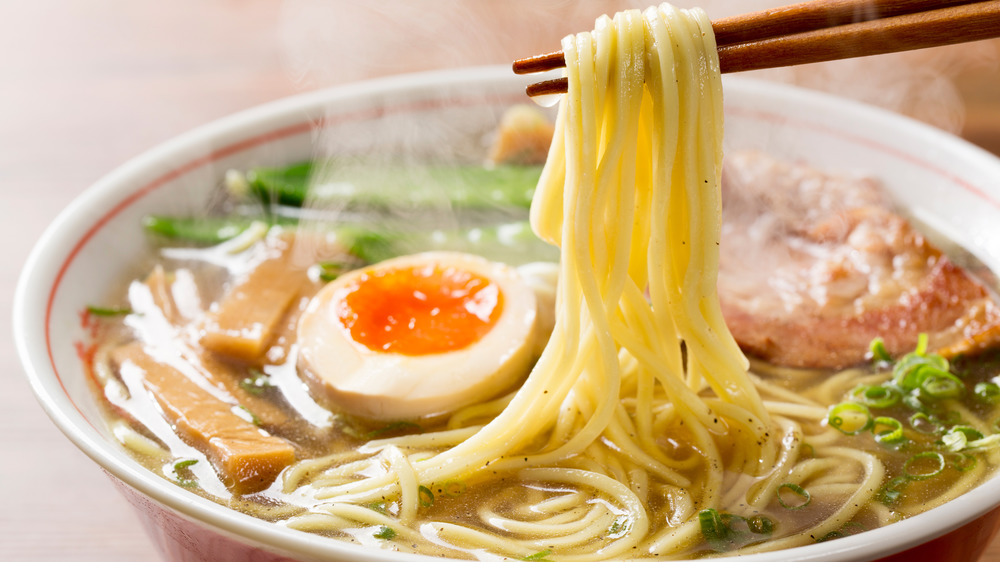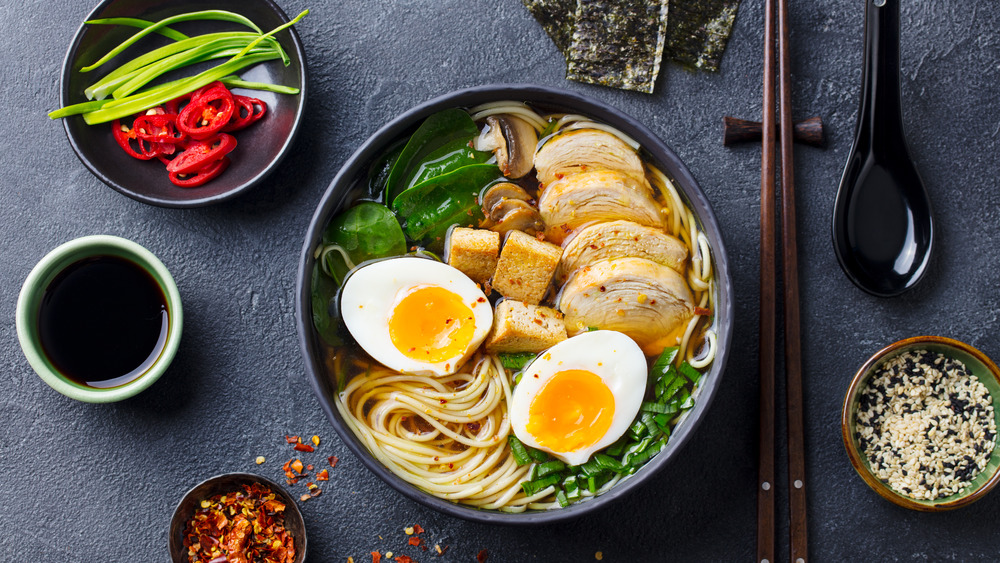Is There A Difference Between Japanese And American Ramen?
In 2015, David Chang, the founder of the restaurant Momofuku Noodle Bar in New York City, which helped bring ramen to the notice of high-level dining, wrote a piece for the now defunct website Lucky Peach, bemoaning the state of American ramen. His complaint, as summarized by Grub Street, was that American ramen consisted of too many pork broth soups made by people who simply want to copy ramen recipes off of the internet. He said these same people do so without making the dish their own, while at the same time placing what they make within the tradition developed by ramen masters and pupils.
"Everyone is sharing the same experience," Chang wrote, as quoted by Fast Company, "but ramen is not supposed to be about that; it's food for people that don't want the same experience, that don't want to be part of the mainstream."
Most rolled their eyes, as The Kitchn did over the fact that Chang exempted himself from the charge; others disagreed outright. Vancouver food critic Alexandra Gill told CBC at the time that Chang was simply upset because his food was no longer unique. Further, as Gill explained, the Vancouver ramen scene had existed five years before David Chang opened his restaurant in New York, and that it had contented itself with cooking Japanese ramen without worrying about reproducing the same bowls yet also adhering to tradition.
The attitude towards cooking ramen differs
As far as significant differences that come into play, one ramen master offers the idea that it may be in the attitude towards making ramen.
Talking to Fast Company, Taka Igo, an executive chef in Cambridge, Massachusetts, and qualified ramen master, told the outlet that he did not consider David Chang a ramen master: "For him, making ramen is about being creative and thinking about food in new ways. That's very different from how we treat food in Japan." In Japan, he explained, the process of cooking is about mastering the nuances of one particular craft, not developing a surface level understanding and then creatively riffing on it. American chefs tend to work in the opposite manner.
A similar idea is mentioned in a piece that Greg Taniguvchi wrote on Oishii Desu about the ramen scene in San Diego. For him, American ramen operates with the logic that more is better, whereas Japanese ramen is more restrained when it comes to adding ingredients, but ensures any added are top quality. Again, what one may see as a restriction on creativity is seen by others as a narrowing of focus to ensure success.

